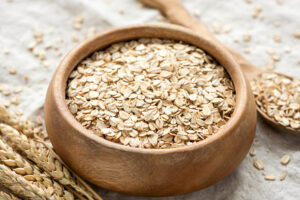A 25-year long study was published in March 2022, which showed that a high fiber diet is important to reduce cardiovascular disease.
Overall, 4125 subjects participated in 1989 to 1990 who were 65 or older at the time of enrollment. In particular, patients were given intermittent food questionnaires and had blood work done to check for inflammatory markers. The researchers followed the subjects for 25 years and reviewed the data. The JAMA Network Open published the study on March 31, 2022. What they found is that higher amounts of fiber reduce the risk for cardiovascular disease.
Details of the study
The total fiber intake per day was 16.3 grams. The researchers broke this down into cereal fiber intake of 4.2 grams per day, intake of 5.2 grams per day and vegetable fiber intake of 6.9 grams per day. It is important to realize that researchers measured several inflammation markers like C-reactive protein, interleukin 6, tumor necrosis factor alpha and others. Notably, an increase in total fiber intake of 5 grams/day reduced the C-reactive protein by 5%. Another key point, the researchers analyzed the various sources of fiber in the food consumed, like cereal, vegetable, and fruit fiber. Only cereal fiber consistently reduced inflammation to the point where there was 10% less cardiovascular disease when subjects consumed enough cereal fiber. In the presence of cereal fiber, the C-reactive protein showed a reduction of 14.2%, a significant finding.
Only cereal fiber is effective in reducing inflammation
Higher intake of total fiber showed association with lower levels of inflammatory markers. This effect was primarily due to cereal fiber. Fruit and vegetable fibers had no association with lowering of inflammatory markers.
What belongs to cereal fiber
There are a number of cereal fibers that will help to reduce your cardiovascular risk.
As the link shows barley, brown rice, corn, millets, oats, rye, sorghum, triticale and wheat all contain significant amounts of fiber. In addition, amaranth, buckwheat and quinoa contain dietary fiber as well.
The effect of cereal fiber is to lower risk of heart disease, manage and reduce the risk of type 2 diabetes. It also protects against colorectal cancer, reduced risk of early death, reduced inflammation and improved weight control. Additionally, there was improvement of digestive health, lower risk of digestive disorders and enhanced immune function.
Conclusion
A new study came out that showed that cereal fiber is superior to reduce inflammation and the risk for heart attacks. Fruit and vegetable fibers showed no effect of lowering the risk for cardiovascular disease. Cereal fiber not only lowers the risk of heart disease, but also of type 2 diabetes. In addition, it protects against colorectal cancer, reduces the risk of early death, inflammation and improves weight control. We all need to maximize our cereal fiber intake. It is needless to say that the source of cereal fibre is not available in highly refined grain products. You will certainly not find it in white bread or a bowl of frosted flakes. But it is readily available in whole grain products. Read the label that informs you about the nutritional content of a product. This way it is easy to tell which product is a good source of fibre.







